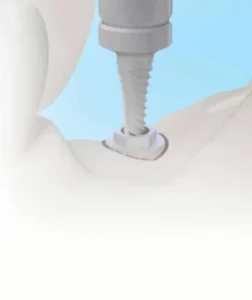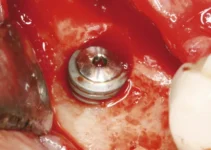Exploring the different types of dental implants can be overwhelming, but understanding your options is crucial for making the best decision for your oral health. Dental implants provide a sturdy foundation for permanent or removable replacement teeth that match your natural teeth. They are designed to fuse with bone, offering a more secure and long-lasting solution than traditional bridges or dentures. Whether you’re considering implants due to tooth loss or decay, this article will help you navigate the selection process to find the right fit for your needs.
“`htmlTypes of Dental Implants
Dental implants have revolutionized the field of dentistry by providing a reliable and long-lasting solution for missing teeth. Understanding the different types of dental implants available can help you make an informed decision tailored to your specific needs. There are primarily two types of dental implants commonly used: Endosteal Implants and Subperiosteal Implants.
Each type of implant has its own set of benefits and is recommended based on the patient’s unique oral and bone health. By choosing the right type of implant, you can ensure better integration, longevity, and functionality of your dental restoration.
Endosteal Implants
Endosteal implants are the most common type of dental implants used today. These implants include screws, cylinders, or blades surgically placed into the jawbone. Once the surrounding gum tissue has healed, a second surgery is necessary to connect a post to the original implant. Eventually, an artificial tooth (or teeth) is attached to the post-individually or grouped on a bridge or denture.
Benefits of Endosteal Implants:
- High Success Rate: Due to their integration with the jawbone, endosteal implants boast a high success rate.
- Support for Multiple Teeth: These implants can support single or multiple teeth, making them versatile.
- Natural Look and Feel: They closely mimic the look and function of natural teeth.

The impression for endosteal implants is often taken at the implant level, allowing for a precise working model to be created. This model guides the fabrication of the final restoration, ensuring a proper fit and aesthetic appearance.
Subperiosteal Implants
Subperiosteal implants are used less frequently but are an excellent option for patients who cannot wear conventional dentures or have insufficient bone height for endosteal implants. These implants consist of a metal frame that fits onto the jawbone below the gum tissue. As the gums heal, the frame becomes fixed to the jawbone. Posts attached to the frame protrude through the gums, where artificial teeth are then mounted.
Advantages of Subperiosteal Implants:
- Minimally Invasive: Unlike endosteal implants, subperiosteal implants do not require bone drilling.
- Suitable for Patients with Bone Loss: These implants are ideal for patients lacking bone height or density.
- Quick Recovery: The less invasive nature often leads to a quicker recovery time.
While subperiosteal implants are not as commonly used as endosteal implants, they offer a viable alternative for specific patient needs. Discussing with your dental professional can help determine if this type of implant is suitable for you.
To continue your journey towards optimal dental health, be sure to explore more of our articles on advanced dental implant techniques and the latest in regenerative bone procedures.
“`
The Dental Implant Procedure
Dental implants have revolutionized the field of restorative dentistry, offering a long-lasting solution for missing teeth. The procedure involves several steps, each crucial for ensuring the success and longevity of the implant. From the initial consultation to the final restoration, every stage is meticulously planned and executed. Understanding these steps can help patients feel more confident and prepared for their dental implant journey.
One of the key advantages of dental implants is their ability to provide a stable and strong foundation for replacement teeth. The process also allows for versatile restoration options, including single-tooth replacements and multi-layer prosthetics. Given the high success rates and durability of implants, more and more individuals are turning to this restorative method to improve their oral health and quality of life.
In this article, we’ll delve into the various stages of the dental implant procedure, from the initial consultation to the different types of restorations available. By the end, you’ll have a comprehensive understanding of what to expect and why dental implants are considered the gold standard in tooth replacement.
Initial Consultation
The journey to getting dental implants begins with an initial consultation. During this appointment, your dentist will conduct a thorough examination of your mouth, including X-rays and possibly a 3D scan. This step is crucial for assessing the condition of your jawbone and the overall health of your teeth and gums. The dentist will also evaluate the spacing available for the implant and discuss your medical history to ensure there are no contraindications. This consultation is an excellent opportunity for you to ask questions and discuss your expectations. Many patients find it helpful to bring a list of questions or concerns to ensure they cover all their bases. Topics you may want to discuss include the types of implant options available, the materials used, and the estimated timeline and costs associated with the procedure.
A customized treatment plan will be created based on the findings from the initial consultation. This plan outlines the steps involved, from any preparatory procedures like bone grafting to the implant placement and eventual restoration. The dentist will provide a comprehensive overview, including the different restoration methods such as screwed or cemented prosthetics. Each option has its own set of benefits and may be recommended based on your unique dental needs.
Benefits of Dental Implants
Dental implants have become a highly sought-after solution for tooth replacement. They offer a range of advantages over traditional dentures and bridges. The benefits span from improved oral health to enhanced appearance and longevity. In this section, we will explore how dental implants can transform your dental experience, making them a preferred choice for many patients.
Implants are designed to provide a strong and stable foundation for replacement teeth that look, feel, and function like natural teeth. By fusing directly to the jawbone, they prevent bone deterioration and preserve the natural structure of your face. These benefits make dental implants an excellent investment in your oral health.
Moreover, dental implants offer unparalleled convenience and comfort, eliminating many of the issues associated with removable dentures. Let’s delve deeper into the specific benefits of dental implants.
Improved Oral Health
Dental implants play a crucial role in maintaining optimal oral health. Unlike traditional methods such as bridges, implants do not require the reduction of adjacent teeth. This means that your natural teeth remain intact, promoting better long-term oral hygiene.
Additionally, because dental implants fuse with the jawbone through a process called osseointegration, they help to prevent bone loss. This fusion encourages the growth of new bone tissue, maintaining the structural integrity of the jaw. It also prevents the shifting of neighboring teeth, which can lead to further complications.
Implants also make oral care much simpler. Since they act like natural teeth, you can brush and floss them just as you would your original teeth. This ease of maintenance helps in preventing plaque buildup and gum disease, ensuring a healthier mouth overall.
Enhanced Appearance
One of the most significant benefits of dental implants is their ability to enhance your appearance. Implants are designed to look, feel, and function like your natural teeth. They are custom-made to match the color and shape of your existing teeth, providing a seamless and natural look.
Because dental implants stimulate the jawbone, they prevent the bone loss that can lead to a sunken facial appearance. This preservation of the facial structure helps you maintain a more youthful and vibrant look. Furthermore, the stability provided by implants means that you can speak and smile with confidence. You don’t have to worry about your dentures slipping or causing discomfort, allowing you to enjoy social interactions without any anxiety.
Long-lasting Solution
Dental implants are renowned for their durability and longevity. When properly cared for, they can last a lifetime. This makes them a cost-effective solution in the long run, as they do not require frequent replacements like other tooth replacement options.
The materials used in dental implants, such as titanium for the implant post and high-quality ceramics for the crown, are incredibly resilient. These materials are resistant to decay and wear, ensuring that your implant remains functional and aesthetically pleasing for many years.
Additionally, the success rate of dental implants is remarkably high, often exceeding 95%. This high success rate, combined with their longevity, makes dental implants a reliable and highly recommended option for those looking to replace missing teeth.
If you’re interested in exploring more about dental implants and their benefits, we encourage you to read our other articles. They provide a wealth of information that can help you make an informed decision about your dental health.
Understanding Dental Implant Restorations
When considering dental implants, understanding the variety of restoration options available is crucial for making informed decisions. Here, we address common questions about direct implant restorations and their mounting methods.
What are the advantages of screw-retained dental implant restorations?
Screw-retained implant restorations offer significant benefits, including versatility and removability, which are crucial for maintenance and adjustments. They utilize components with a hermetic seal, such as square aesthetic abutments, to ensure durability and a natural appearance. The ability to easily remove the prosthesis without damaging the implant or the crown also makes this method preferable for many dental professionals and patients alike.
When should cemented restorations be considered for dental implants?
Cemented restorations are generally recommended for situations where implants have been placed in positions that are not ideal for screw-retained solutions. This method can provide better aesthetics in cases where correct prosthetic alignment might otherwise be challenging. Cemented restorations involve attaching the crown to the implant using dental cement, offering a secure fit while allowing for more positional flexibility relative to the implant.

My name is Salman Kapa, a 73-year-old expert in bone regeneration and dental implantology. With decades of experience in the field, I am dedicated to advancing our understanding of oral health and hygiene. Through my research and writing, I aim to contribute to the development of innovative solutions in dental care.




